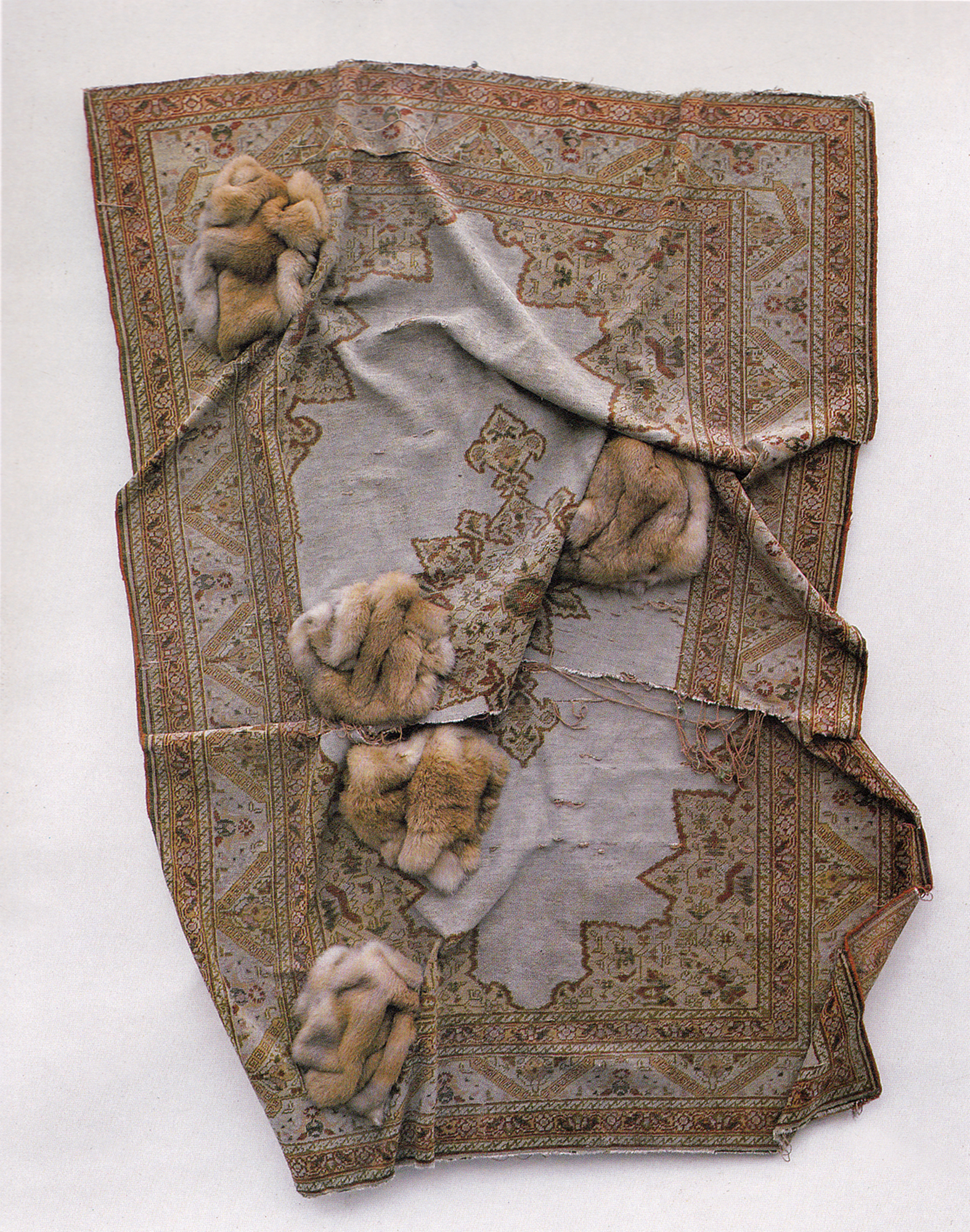Günter Weseler
breathing object, carpet, 1980
Artist
Günter Weseler
Title
breathing object, carpet
Year of creation
1980
Technology and dimensions
carpet, rabbit fur, motor, 160 x 115 x 12 cm
Year of acquisition
2011
Acquisition of the foundation
Working with the breathing objects, changing connections in terms of position, place and situation soon showed me that their character could change completely, that the objects became fundamental symbolic figures for certain life situations or certain fears.
Also that they change their environment at the same time: Kienholz criticized a breathing object in the corner of his brothel environment.
I noted these experiences at the time as follows: “Actually, the railing of the child's bed was only intended as protection so that no one would sit on the lying, breathing creature... but I discovered that the object suddenly took on a completely different character:
something completely unseemly threatening "Violent things came from him..." - It was the discovery that breathing objects change significantly depending on the place in which they are located.
Objects that are relatively abstract in the middle of the wall, at best “submarine”, appear to have wings when sitting on an edge; and easily frightened, they might flutter away again. They are hidden in the corner or in the nook, sometimes lurking a little, crouching on a tree trunk they become parasites, on the human body, if possible on the neck, they can spread terror like a nasty tumor.
Breathing objects in connection with folds, in old, valuable carpets, sometimes cracked and worn, become symbols of transience (nothing can exist without its opposite). (Oslo)
In an exhibition of my work in the Wiesbaden Museum, an art historian commented: “The internal material rottenness of the entire museum holdings could not be better demonstrated by anything than these carpets and tapestries infested with growth...”
The ambiguity is in no way limited, but rather wins of mystery, since a component appears that is rather opposite to the character created by the form of movement. The originally “general metaphors of organic life” now become metaphors of the parasitic proliferation or the trapped sufferer (in a cage) or the violent usurper (cot), etc. The objects, the place, the space become part of a statement.
The breathing objects gave me the opportunity to artistically formulate a variety of environmental experiences and problems.
Günter Weseler
